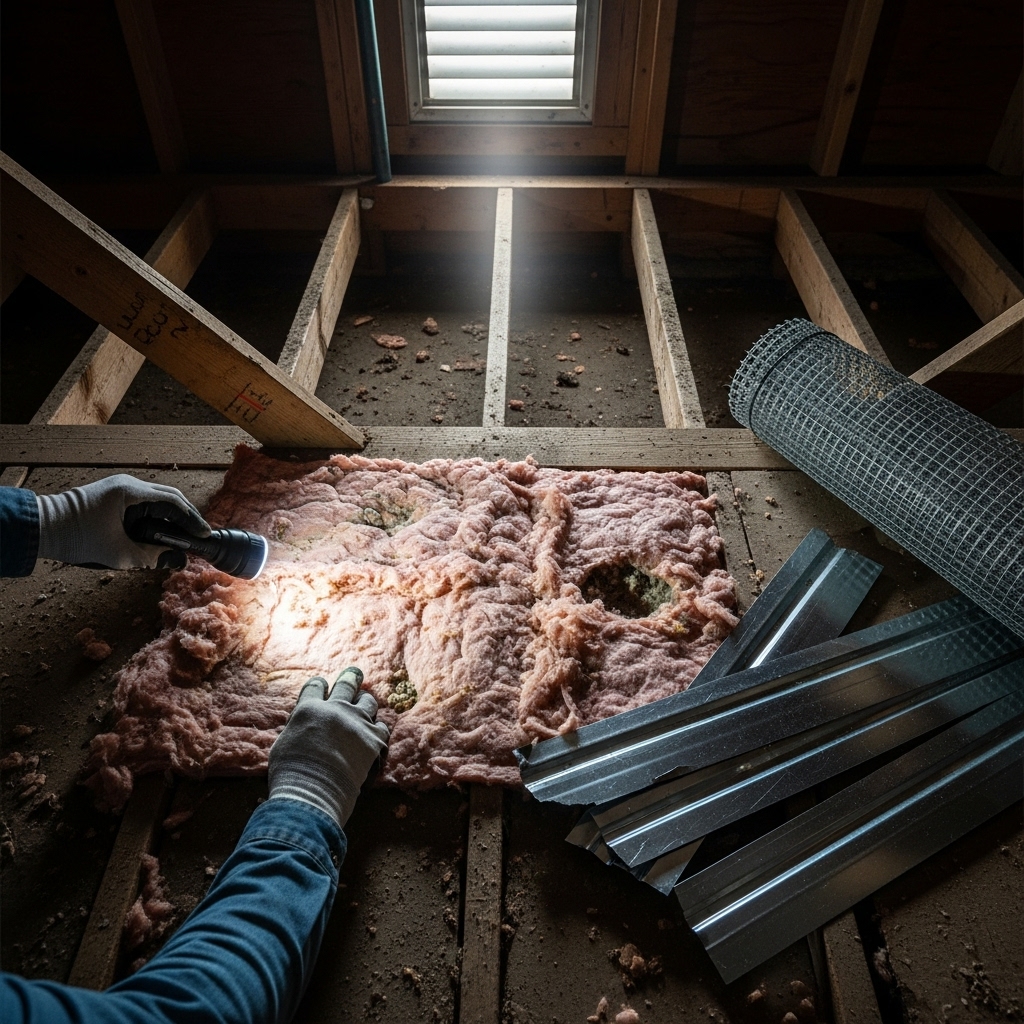Angelenos know that life here flows between canyons, coastlines, and neighborhoods stitched together by palm-lined streets. We also know that our homes, from vintage bungalows to sleek contemporary builds, can attract resourceful rodents looking for warmth, food, and shelter. The best methods to protect a Los Angeles home balance precision sealing with smart sanitation and a keen understanding of how local architecture and climate shape rodent behavior. If you are beginning to research effective rodent proofing, this guide walks you through the methods that actually work in our city and why they outperform quick fixes.
The reality in LA is straightforward: rodents exploit the tiniest openings, and once inside, they follow scent trails and familiar routes along framing, ductwork, and insulation. They are agile climbers, which is why rooflines and eave vents are frequent entry points. The answer is not just bait or temporary deterrents; it is a systematic approach that closes off access, removes attractants, and monitors results long enough to confirm the home is truly quiet.
Start with a Meticulous Inspection
Every effective plan begins at the perimeter. A comprehensive inspection documents gaps around utility lines, conduit penetrations, garage corners, and door thresholds. It tracks rub marks up downspouts and fences, then follows the trail to roof returns and gable vents. Inside, an attic inspection looks for droppings, chewed insulation, and voids where light shows through. A crawl space review checks sill plates, vent openings, and plumbing penetrations. The aim is to build a complete map of how and where rodents are interacting with your structure.
Los Angeles homes often reveal patterns linked to their era. Craftsman eaves with exposed rafter tails can conceal small openings. Spanish Revival soffits and stucco returns sometimes hide hairline gaps. Flat roofs with parapets require close attention to scuppers and roof drains. The best inspectors know these features intimately and will photograph them so you see exactly what needs to be addressed.
Exclusion with Durable Materials
Sealing is the heart of the work. Instead of relying on foam or soft fillers that rodents can chew through, use hardware cloth of appropriate gauge, metal flashing, and high-quality sealants where appropriate. Door sweeps that eliminate daylight under doors are crucial, especially at garage and side entries. Vent screens should be upgraded to rodent-resistant versions that maintain airflow while blocking access. Chimney caps and properly screened attic vents are also high-impact measures.
Along the coast, materials must resist corrosion; inland, they must tolerate heat without sagging or loosening. Fasteners should be chosen with longevity in mind. A small detail like a mis-sized screen or a poorly seated sweep can undo an otherwise thorough job. The best methods emphasize neatness—tight fits and clean lines that blend into the structure so you hardly notice them.
Sanitation to Reset the Environment
Even a well-sealed home can retain the scent trails rodents use to navigate. Targeted sanitation removes droppings and soiled insulation, reducing odors and breaking the cues that might draw rodents back. In heavier cases, insulation removal under proper containment, followed by disinfection and fresh insulation installation, restores air quality and helps deter reinfestation. This is not an afterthought; it is part of a comprehensive strategy that treats your home as a living environment, not just a set of gaps to plug.
Landscaping and Surroundings
Rodents use what is available. Ivy on walls acts like a ladder. Overhanging tree branches are highways to the roof. Clutter along side yards creates shelter. The best methods include trimming recommendations, secure storage for pet food, and refusal of open compost near structures. In many Los Angeles neighborhoods, fruit trees are abundant; keeping fruit picked and the ground clear reduces nightly foraging that draws rodents near the home.
Monitoring and Follow-Up
After sealing and sanitation, brief monitoring ensures that activity has subsided and that no overlooked entry points remain. Technicians may suggest strategic trapping to verify that rodents are now outside, not inside, the envelope. Follow-up visits after heavy winds, roof work, or remodels help maintain the barrier. In dynamic settings—near construction, in canyons, or on older blocks—this watchful step locks in long-term success.
Working with the Structure You Have
Every house tells its own story. A hillside home on stilts in Echo Park demands attention to the underside and stair stringers, while a Valley ranch calls for long runs of sealing at roof-to-wall joints. Beach-area homes need corrosion-resistant screens and flashings. Parapet-roofed houses require carefully screened scuppers and tight utility chases. The best method is the one tailored to your house as it stands today, with materials chosen for how they will perform tomorrow.
Why Quick Fixes Fall Short
Baits and repellents can appear to work for a moment but often create new problems without addressing the cause. Poison can lead to dead rodents in inaccessible areas, odors, and risks to pets and wildlife. Repellents fade and do not stop determined rodents from exploiting structural weaknesses. In contrast, a commitment to exclusion and sanitation does the hard but necessary work of transforming your home into a place rodents cannot access or tolerate.
Signs It’s Time to Act
Noises at night, droppings in the attic or garage, gnaw marks, and oily rub marks along baseboards are all signals. A single nighttime disturbance might be an outlier, but repeated noises usually point to a pattern. When you notice these signs, do not wait for them to escalate. Early intervention keeps contamination limited and makes sealing more straightforward.
In the middle of a well-executed project, homeowners often sense the difference: the home quiets down, new evidence stops appearing, and a sense of calm returns. That is when you know the combination of careful inspection, durable exclusion, and targeted sanitation—the core of effective rodent proofing—is working as intended.
Living Comfortably After Proofing
Once your home is sealed and sanitized, small habits help preserve the gains. Keep the roofline clear of overhanging branches. Use tight-lidded bins for bird seed and pet food. Check that doors close fully and that no daylight shows under sweeps. After any contractor visits—roofers, electricians, internet installers—take a moment to look around the penetrations they touched. A quick check today prevents a surprise tomorrow.
Frequently Asked Questions
Q: What makes Los Angeles homes particularly vulnerable? A: Complex rooflines, aging vents and thresholds, and lush landscaping provide both access and attractants. Microclimates also stress materials, creating tiny openings over time.
Q: Do I need to replace my attic insulation? A: Only if contamination is widespread or the insulation is degraded. Many homes benefit from targeted sanitation without full replacement.
Q: How long do results last? A: With quality materials, precise sealing, and periodic checks after storms or remodels, results are long-lasting. Homes evolve; light maintenance keeps protections strong.
Q: Can I do this myself? A: Homeowners can seal obvious gaps and improve sanitation, but a professional inspection catches subtle points and ensures nothing is missed, especially at heights and complex roof features.
Q: Are poisons necessary? A: No. Effective methods focus on exclusion and sanitation. Trapping may be used strategically to confirm results, but the goal is to prevent entry in the first place.
Q: Will the work change my home’s appearance? A: Quality exclusion is discreet. Screens and flashings are chosen and installed to blend with existing materials while delivering robust protection.
Q: How soon will I notice a difference? A: Many homeowners report quieter nights immediately after sealing key entry points and completing sanitation, with full calm following shortly thereafter.
If you want a home that stays quiet season after season, partner with local specialists who bring careful eyes, steady hands, and a plan built for your specific structure. Reach out to schedule an inspection and learn how targeted rodent proofing can make your Los Angeles home healthier, cleaner, and more peaceful for years to come.

